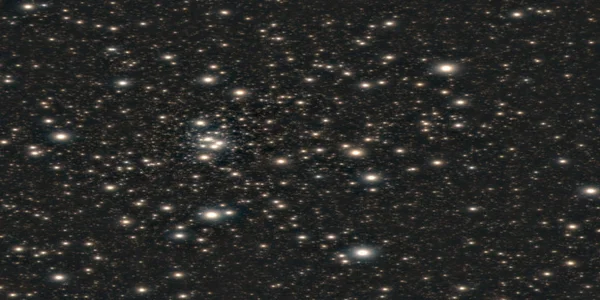6:24 PM HP 1: one amongst opaque Way’s Oldest Star Clusters Discovered | |
|
A team of astronomers mistreatment the Gemini-South telescope has discovered one amongst the oldest stellar clusters within the galaxy. The team’s results date the orbicular cluster, named HP 1, at concerning twelve.8 billion years, creating its stars among the oldest ever found in our Galaxy.
Globular clusters are ancient teams of thousands or perhaps countless stars, gravitationally sure into one structure concerning 100-200 light-years across. These huge stellar systems are among the oldest noted objects within the Universe and are relics of the primary epochs of galaxy formation. Most of them are thought to possess united out of the primaeval gas cloud that later folded to make the opaque Way’s spiral disk, whereas others seem to be the cores of dwarf galaxies consumed by the Galaxy. Of concerning 150-180 orbicular clusters noted within the galaxy, a couple of quarter are settled inside the Galaxy’s greatly obscured and tightly packed central bulge region. This spherical mass of stars some ten,000 light-weight years across forms the central hub of the galaxy that is created primarily of previous stars, gas, and dust. Among the clusters inside the bulge, people who are the foremost metal-poor (lacking in heavier elements) — which has horsepower one — have long been suspected of being the oldest. HP one then is crucial , because it is a superb tracer of our Galaxy’s early chemical evolution. “This star cluster is like associate degree ancient fossil buried deep in our Galaxy’s bulge, and currently we’ve been able to date it to a far time once the Universe was terribly young,” aforementioned team member Dr. Stefano Souza, a Doctor of Philosophy student at the Universidade DE Sao Paulo, Brazil. “These are a number of the oldest stars we’ve seen anyplace. “HP one is one amongst the extant members of the elemental building blocks that assembled our Galaxy’s inner bulge,” aforementioned team leader Dr. Leandro Kerber, {an|Associate in Nursing|AN|associate DEgree|associate} uranologist at the Universidade de Sao Paulo and Universidade Estadual de Santa Cruz, Brazil. Until some years past, astronomers believed that the oldest orbicular star clusters were solely settled within the outer elements of the galaxy, whereas the younger ones resided within the innermost Galactic regions. However, this study, further as different recent work supported information from the Gemini Observatory and therefore the NASA/ESA astrophysicist house Telescope, have discovered that ancient star clusters are found inside the Galactic bulge and comparatively near the Galactic center. “HP one is taking part in a crucial role in our understanding of however the galaxy shaped. it's serving to North American country to bridge the gap in our understanding between our Galaxy’s past and its gift,” Dr. Kerber aforementioned. The astronomers used the delicately deep high-resolution adaptative optics pictures from Gemini Observatory further as deposit optical images from astrophysicist to spot faint cluster members, that are essential for age determination. With this wealthy information set they confirmed that horsepower one could be a fossil relic born but a billion years once the large Bang, once the Universe was in its infancy. To determine the cluster’s distance, they used deposit ground-based information to spot eleven RR Lyrae variable stars inside horsepower 1. The determined brightness of those stars indicate that horsepower one is at a distance of concerning twenty one,500 light-weight years, putting it close to half dozen,000 light-weight years from the Galactic center, well inside the Galaxy’s central bulge region. The team additionally used information from Gemini, Hubble, ESO’s terribly massive Telescope, and ESA’s Ge mission to refine the orbit of horsepower one inside the galaxy. This analysis shows that in horsepower 1’s history, the cluster came as shut as concerning four hundred light-weight years from the Galactic center — but simple fraction of its current distance. | |
|
| |
| Total comments: 0 | |
